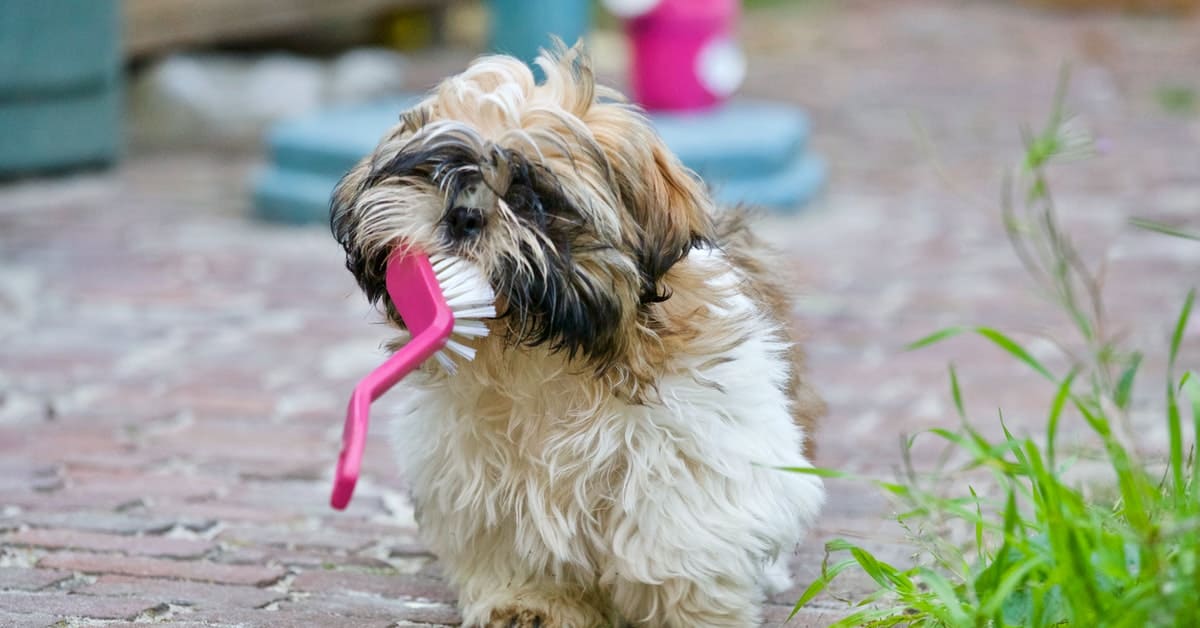The Importance of Brushing Your Pet’s Teeth
Pet teeth. We know dental health is important for people, but did you know it is important for pet health, too? Dental disease is one of the most common diseases affecting dogs and cats, and it can result in significant health issues. Brushing your pets’ teeth is the best way you can preserve their oral health. Ideally, you should brush the teeth daily, but experts recommend a minimum of three times per week.
Introducing Teeth Brushing to Your Pet
It is best to expose your pet to teeth brushing from a young age but you can still teach an older pet with a little patience. Lavishing your pet with praise and affection, as well as moving slowly, will help them accept teeth brushing. Start at a quiet time, and gently lift up the lip and rub either a cloth or your finger along the gum line where the most disease occurs, taking care to avoid getting bitten. For the first few sessions, rub gently along just a few teeth and then give your pet a break. If your pet is overwhelmed or nervous, try again at a less stressful time. As your pet gets used to having the cloth rubbed along the teeth, add in a bit of toothpaste. You will want to only use pet toothpaste, which is safe to swallow and offers flavours such as liver and London broil. Pet toothpaste is often enzymatic, so you are having some effect just by brushing it on the teeth, even if you can’t really brush with a lot of mechanical action. Once you have found a toothpaste that your pet likes, put a little on your finger or the cloth you are using and brush it over your pet’s teeth. Once your dog or cat has gotten used to teeth brushing with a cloth or your finger and toothpaste, it’s time to add in a toothbrush. Like toothpaste, there are a few different varieties: large ones, small ones, and even ones that fit over your finger. The good news is that the action of the tongue helps get rid of plaque on the inside of the teeth, so the area you really need to focus is on the outer portion of the teeth where the tongue doesn’t touch.
Which Products Should You Use?
Finding a toothbrush to use is often a matter of what is comfortable for you to use with your pet. When choosing oral care products, you can consult with your veterinarian on the type to choose. Many places recommend products with the Veterinary Oral Health Council’s (VOHC) Seal of Approval. This international group of veterinary dentists assesses products to meet certain levels of effectiveness. If your dog or cat does not allow you to brush their teeth, the VOHC also lists a variety of other oral care products, including dental chews. A combination approach is often most effective for helping prevent periodontal disease. Consequences of Dental Disease Halitosis, or bad breath, is often noted by owners when pets have dental disease. As your pet’s gums become irritated, they can bleed and become sore. Resorptive lesions may develop on your pet’s teeth, particularly in cats, and your pet may have trouble chewing food. In addition, bacteria can enter the bloodstream from around the roots, causing disease and lesions within the heart, kidneys, and liver. To help prevent their problems from developing, you should properly brush your pet’s teeth regularly, making it a part of your everyday routine.
Let us help!
My Peterinarian is not just about providing exercise and attention for your pets while you’re busy or out of town. With us, you’ll have the advantage of having an educated current or future veterinarian who understands your pet’s needs to look after them. If you have questions about your pets’ dental hygiene or need help to start brushing their teeth send us a message today.

